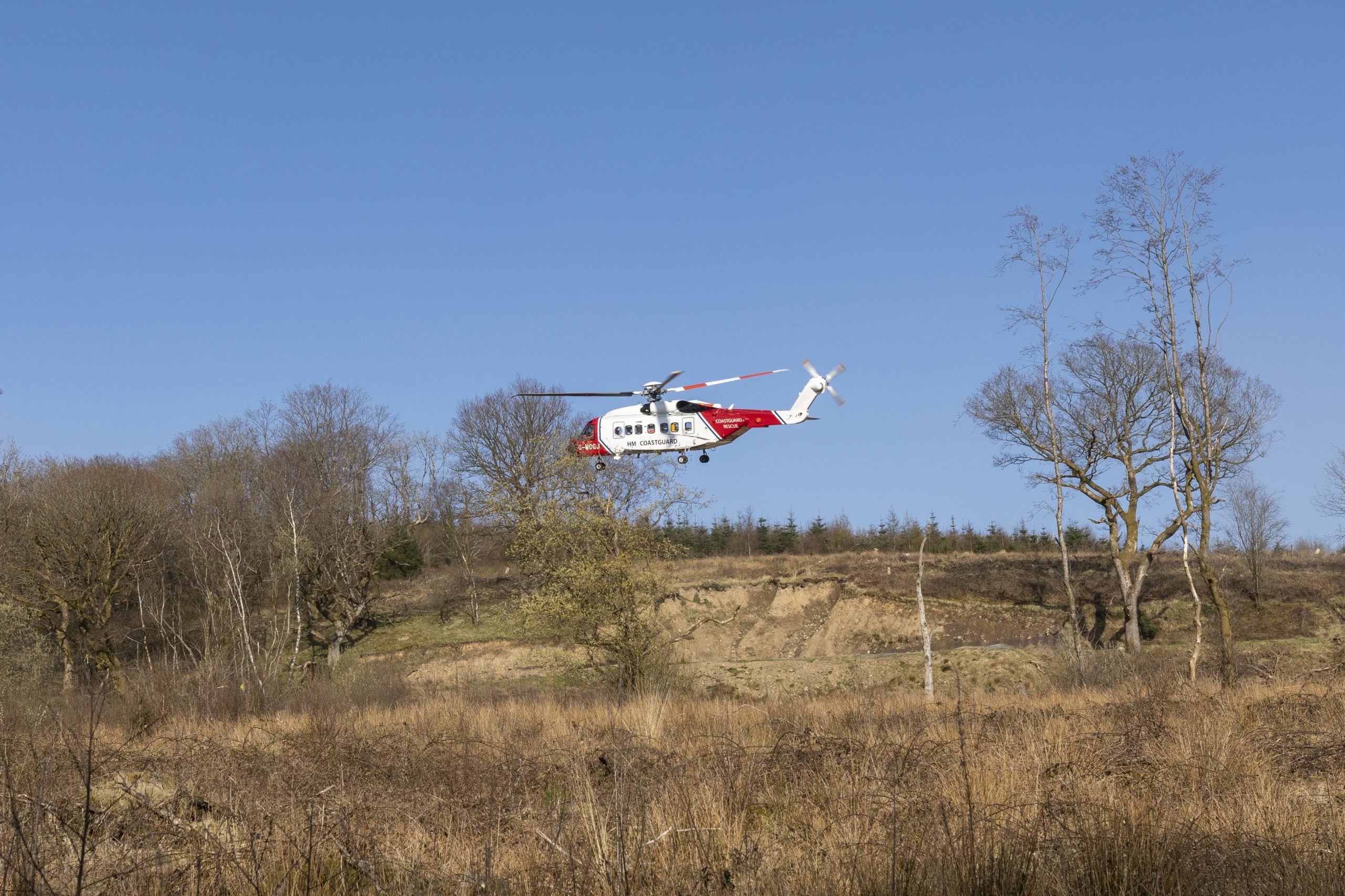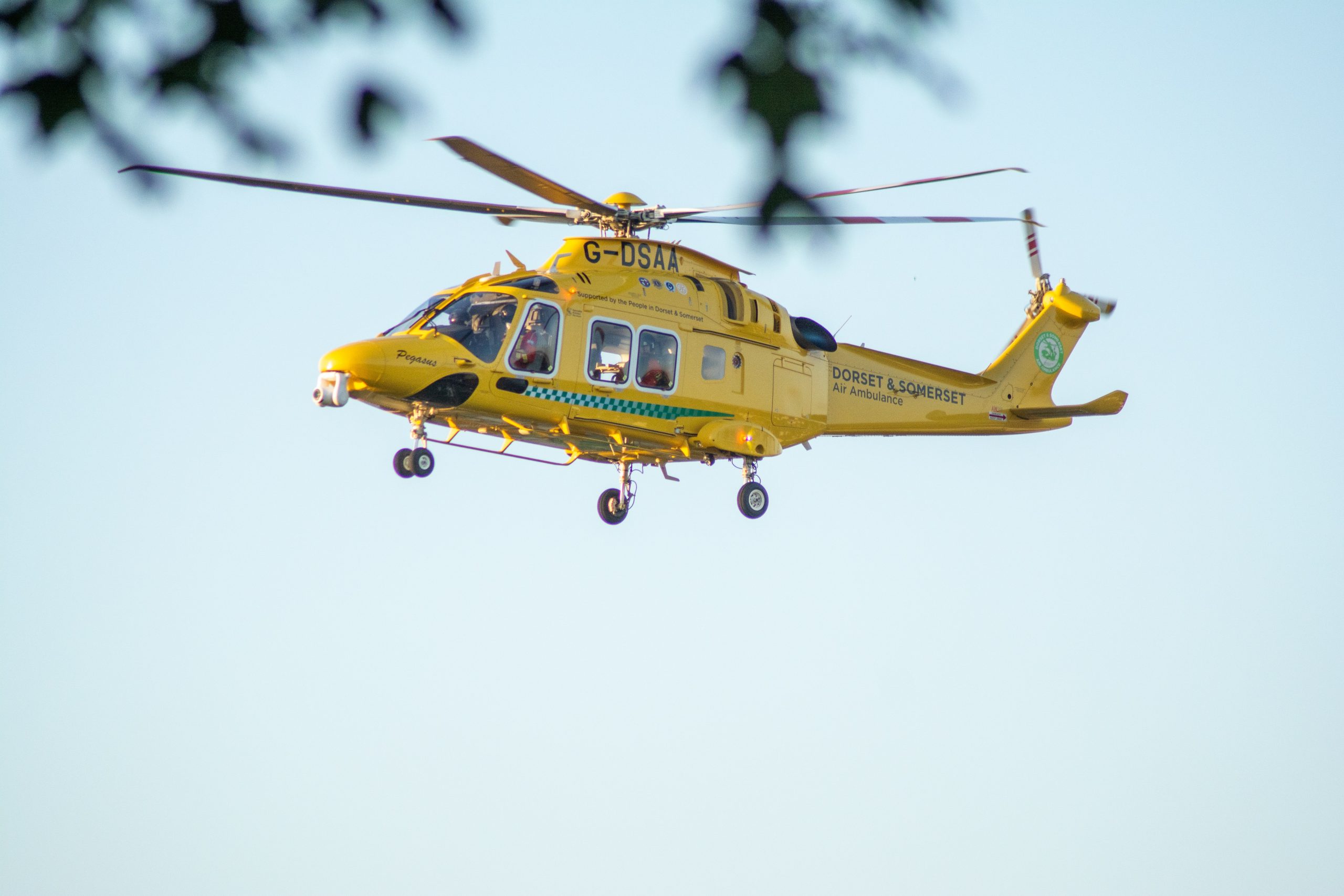So you’re curious about high-stress air ambulance missions, huh? Well, buckle up and get ready to learn some valuable lessons from the experts. In this blog post, we’re going to delve into the world of air ambulances and uncover the essential knowledge gained from these adrenaline-pumping missions. From the challenges faced by the brave medical teams to the strategies employed to ensure safety and efficiency, we’ll cover it all. So sit tight, grab a cup of coffee, and let’s dive in to explore the valuable lessons learned from high-stress air ambulance missions.
Preparing for High-Stress Air Ambulance Missions
Air ambulance missions can be incredibly demanding and require the utmost preparedness to ensure the safety and well-being of both the crew and the patients. The following sections will outline the key aspects of preparation for these high-stress situations, covering mental and emotional preparedness, physical fitness, as well as equipment and supply readiness.
Mental and Emotional Preparedness
Being mentally and emotionally prepared for high-stress air ambulance missions is crucial for the well-being of the crew and the successful completion of the mission. It is essential to develop resilience, the ability to adapt and cope with challenging situations. This can be achieved through training programs that focus on stress management techniques, such as mindfulness and deep breathing exercises. Additionally, fostering a supportive and open team culture, where crew members can discuss and debrief their experiences, can greatly contribute to mental well-being.
Physical Preparedness
Air ambulance crews often face physically demanding tasks during missions, requiring them to be in peak physical condition. Regular exercise, including cardiovascular and strength training, is essential to maintain the physical fitness necessary for these missions. It is also vital to prioritize proper nutrition and hydration to ensure optimal physical performance. Pre-mission medical check-ups can help identify and address any potential health concerns that could impact the crew’s ability to perform under high-stress conditions.
Equipment and Supply Readiness
Before each mission, it is essential to ensure that all equipment and supplies are in proper working order and readily available. Regular equipment inspections and maintenance protocols should be established to detect and address any issues promptly. Additionally, having a well-stocked inventory of necessary supplies is crucial to address unexpected challenges or complications during air ambulance missions. Implementing a standardized checklist system can help ensure that all required equipment and supplies are always readily available and properly stocked.
Effective Communication in High-Stress Environments
Effective communication is vital in high-stress air ambulance environments, as it allows for the seamless coordination and execution of critical tasks. Establishing clear communication channels, utilizing standard communication protocols, and maintaining effective team communication are key aspects to focus on.
Establishing Clear Communication Channels
Clear communication channels are essential to ensure that information is relayed accurately and efficiently during air ambulance missions. Designating a designated communication officer or utilizing a central communication system can help streamline communication and prevent any confusion or miscommunication. It is crucial to establish a clear chain of command and ensure that all crew members are aware of their roles and responsibilities in the communication process.
Utilizing Standard Communication Protocols
Standard communication protocols are essential for efficient and effective communication during high-stress situations. Using clear and concise language, utilizing standardized abbreviations and codes, and following established protocols for relaying critical information can help prevent misunderstandings and ensure that all necessary information is communicated accurately. Regular training and practice in these protocols are crucial to ensure that all crew members are familiar with and proficient in their use.
Maintaining Effective Team Communication
Maintaining effective team communication is critical for the successful coordination of tasks and the overall safety of air ambulance missions. Regular team meetings, briefings, and debriefings should be conducted to ensure that all crew members are on the same page and have a clear understanding of the mission objectives. Encouraging open and respectful communication among team members fosters a sense of trust and supports effective collaboration. Additionally, implementing closed-loop communication, where messages are acknowledged and confirmed, helps reduce the risk of miscommunication.
Safety Considerations during High-Stress Air Ambulance Missions
Safety should always be the top priority during high-stress air ambulance missions. It is crucial to conduct thorough risk assessments, implement mitigation strategies, prioritize crew and patient safety, and adhere to infection control protocols.
Risk Assessment and Mitigation Strategies
Before each mission, conducting a comprehensive risk assessment is essential to identify potential hazards and develop strategies to mitigate those risks. This includes assessing factors such as weather conditions, potential security risks, and the complexity of the medical case being transported. By proactively identifying and addressing potential risks, air ambulance crews can better prepare for and mitigate adverse situations.
Crew and Patient Safety Measures
Ensuring the safety of both the crew and the patient is paramount during air ambulance missions. This includes wearing appropriate personal protective equipment (PPE) to protect against potential infectious diseases and following strict infection control protocols. Additionally, implementing safety procedures such as proper patient handling techniques, securing medical equipment, and maintaining a clean and organized workspace minimizes the risk of accidents and injuries during transport.
Infection Control Protocols
Infection control protocols are crucial to prevent the spread of infectious diseases during air ambulance missions. This includes proper hand hygiene, disinfection of equipment and surfaces, and the use of appropriate barriers and PPE. Regular training and education on infection control practices are essential to ensure that all crew members are well-versed in these protocols and consistently adhere to them.
Maintaining Clinical Competence under Pressure
The ability to maintain clinical competence under pressure is vital for air ambulance crews. Continuous education and training, simulation exercises and drills, as well as effective clinical decision-making, are key areas to focus on to ensure clinical proficiency in high-stress situations.
Continuing Education and Training
Continuing education and training are vital for air ambulance crews to stay updated on the latest medical advances and protocols. This includes attending conferences, workshops, and online courses to enhance their knowledge and skills. Regular training sessions and case reviews specific to air ambulance missions should also be conducted to ensure that crew members are equipped with the necessary clinical knowledge and expertise.
Simulation Exercises and Drills
Simulation exercises and drills are an effective way to enhance clinical competence under pressure. These exercises involve recreating high-stress scenarios and allowing crew members to practice their skills and decision-making in a controlled environment. By simulating realistic scenarios, air ambulance crews can improve their response and adaptability, identify areas for improvement, and refine their clinical skills.
Clinical Decision-Making in High-Stress Situations
The ability to make sound and effective clinical decisions in high-stress situations is crucial for air ambulance crews. This requires a combination of clinical expertise, critical thinking, and effective communication. Regular case-based discussions, debriefings, and the use of clinical decision support tools can help enhance crew members’ decision-making abilities and ensure optimal patient care.
Proper Utilization of Air Ambulance Resources
Efficient use of air ambulance resources is essential to ensure the timely and effective completion of missions. This includes conducting situational resource assessments, optimizing aircraft configurations, and collaborating with ground ambulance services when necessary.
Situational Resource Assessment
Conducting a situational resource assessment before each mission helps determine the optimal allocation of resources. This includes considering factors such as the medical acuity of the patient, the distance to be traveled, and the availability of appropriate medical equipment. By assessing the specific requirements of each mission, air ambulance crews can ensure that they have the necessary resources on board without overburdening the aircraft.
Optimizing Aircraft Configurations
Optimizing aircraft configurations plays a crucial role in maximizing the efficiency and effectiveness of air ambulance missions. This includes ensuring that the aircraft is properly equipped with the necessary medical equipment and supplies, while also considering the weight and balance limitations of the aircraft. Regular reviews of aircraft configurations, guided by industry best practices, can help identify opportunities for optimization and improve the overall capability of air ambulance missions.
Collaboration with Ground Ambulance Services
In certain situations, collaboration with ground ambulance services may be necessary to facilitate seamless patient transfers. This could involve coordinating ground transport for patients to and from the aircraft, or even utilizing ground ambulances for certain stages of the mission. Building strong partnerships with local ground ambulance services and establishing clear communication channels between the air and ground crews is essential for effective collaboration and patient care.
Addressing Ethical Challenges in High-Stress Scenarios
High-stress air ambulance missions can present unique ethical challenges that require careful consideration and decision-making. Balancing autonomy and beneficence, navigating resource allocation dilemmas, and practicing cultural sensitivity in ethical decision-making are key aspects to address.
Balancing Autonomy and Beneficence
Medical decisions made during air ambulance missions can often involve balancing the patient’s autonomy and the overall beneficence or well-being of the patient. In high-stress situations, where time is of the essence, it is essential to consider the patient’s wishes while also prioritizing their immediate medical needs. Clear communication and collaboration with the patient, their family, and medical professionals can help ensure that ethical decisions are made in the best interest of the patient.
Navigating Resource Allocation Dilemmas
Resource allocation dilemmas can arise during high-stress air ambulance missions, where limited resources must be allocated to multiple patients or critical situations. Establishing clear guidelines and protocols for resource allocation can help ensure fairness and transparency in decision-making. Regular ethical training and discussions within the air ambulance team can help prepare crew members to make difficult decisions and navigate resource allocation dilemmas ethically.
Cultural Sensitivity in Ethical Decision-Making
During air ambulance missions, crew members may encounter patients from different cultural backgrounds, each with their own ethical beliefs and values. Practicing cultural sensitivity and respecting cultural differences is crucial in ethical decision-making. It is essential to consider the cultural context and involve interpreters or cultural brokers when necessary to ensure effective communication and understanding. Maintaining an inclusive and non-judgmental approach contributes to patient-centered care and ethical decision-making.
Overcoming Challenges of Time Constraints
Time constraints are a common challenge in high-stress air ambulance missions, where urgent medical care is often required. Efficient task prioritization, streamlined workflow strategies, and effective time management techniques are essential to overcome these challenges.
Efficient Task Prioritization
Efficient task prioritization is crucial in high-stress environments to ensure that critical actions are addressed promptly. This involves identifying the most time-sensitive and life-threatening tasks and prioritizing them over less urgent actions. Establishing clear protocols and guidelines for task prioritization, along with regular team training and updates, ensures that all crew members are aligned in their understanding of priorities and can respond effectively.
Streamlined Workflow Strategies
Streamlined workflow strategies help optimize the use of time and resources during air ambulance missions. This includes eliminating unnecessary steps, minimizing interruptions, and implementing standardized processes. Effective task delegation and clear communication among team members further enhance workflow efficiency. Regular evaluations and feedback on workflow strategies enable continuous improvement and efficiency gains.
Time Management Techniques
Effective time management techniques are essential for air ambulance crews to successfully navigate the challenges of high-stress missions. This includes setting realistic timelines, breaking down tasks into smaller manageable components, and implementing tools such as checklists and time-based reminders. Crew members should also be encouraged to prioritize self-care and stress-reduction techniques to maintain their focus and energy levels during time-critical missions.
Effective Stress Management Techniques for Air Ambulance Crews
Stress management is crucial for air ambulance crews to ensure their overall well-being and prevent burnout. Implementing stress reduction practices, post-mission critical incident stress debriefings, and coping mechanisms are effective ways to manage stress.
Implementing Stress Reduction Practices
Implementing stress reduction practices is essential to help air ambulance crews cope with the high-stress nature of their work. This can include techniques such as mindfulness exercises, deep breathing, and regular physical exercise. Providing access to mental health resources, such as counseling services, can also greatly contribute to stress management and overall well-being.
Post-Mission Critical Incident Stress Debriefings
Post-mission critical incident stress debriefings allow air ambulance crews to process and discuss the emotional impact of challenging missions. These debriefings provide an opportunity for the crew to share their experiences, emotions, and concerns, fostering a supportive team environment. By addressing and normalizing stress reactions, critical incident stress debriefings facilitate emotional healing and prevent long-term psychological effects.
Coping Mechanisms to Prevent Burnout
Coping mechanisms are essential for air ambulance crews to prevent burnout and maintain their overall well-being. This can include activities such as engaging in hobbies, spending quality time with loved ones, and seeking emotional support from peers or support groups. It is crucial to create a culture that encourages self-care practices, emphasizes work-life balance, and provides resources for emotional support when needed.
Improving Team Dynamics in High-Stress Environments
Effective team dynamics greatly contribute to the success of air ambulance missions in high-stress environments. Building trust and camaraderie, effective leadership and roles, and respecting individual contributions are key elements to focus on.
Building Trust and Camaraderie
Building trust and camaraderie among air ambulance team members is vital for effective teamwork in high-stress environments. This can be achieved through team-building activities, regular meetings, and fostering open communication channels. Encouraging a culture of respect, empathy, and psychological safety within the team creates an environment where trust can thrive and enhances the overall performance and well-being of the crew.
Effective Leadership and Roles
Effective leadership plays a crucial role in high-stress air ambulance missions. Clear leadership roles and responsibilities should be established, with designated leaders accountable for decision-making and coordination. Cultivating strong leadership skills, such as effective communication, delegation, and adaptability, prepares leaders to guide the team through challenging situations and fosters a sense of confidence and trust within the crew.
Respecting Individual Contributions
Each member of the air ambulance team brings unique skills, expertise, and perspectives. Respecting and valuing individual contributions is essential for effective team dynamics. This involves actively listening to team members’ ideas and feedback, encouraging collaboration, and utilizing the strengths of each team member. Facilitating open dialogue and ensuring that all team members feel heard and respected fosters a sense of ownership and investment in the overall mission success.
Continuous Quality Improvement in Air Ambulance Missions
Continuous quality improvement is vital in air ambulance missions to ensure the delivery of safe and effective care. Regular performance evaluations, learning from adverse events, and implementing evidence-based practices are key aspects of achieving and maintaining high standards of care.
Regular Performance Evaluations
Regular performance evaluations enable air ambulance crews to identify areas of strength and areas that require improvement. This can be done through individual assessments, peer evaluations, and constructive feedback sessions. These evaluations provide valuable insights for both personal and team development, helping to enhance performance and patient care.
Learning from Adverse Events
Adverse events occur even in the most well-prepared air ambulance missions. Learning from these events is crucial for continuous quality improvement. Establishing a culture of transparency and psychological safety allows for open discussions about adverse events and near misses. Conducting thorough incident reviews and implementing corrective measures helps identify system vulnerabilities and prevent future occurrences.
Implementing Evidence-Based Practices
Implementing evidence-based practices and guidelines is essential for delivering safe and effective care in air ambulance missions. Staying up-to-date with the latest research and best practices ensures that the care provided is based on the most current evidence. Regular training and education on evidence-based practices help reinforce these standards and ensure that they are applied consistently.
In conclusion, high-stress air ambulance missions require comprehensive preparation in mental and emotional well-being, physical fitness, equipment and supply readiness, and effective communication. Safety considerations, maintaining clinical competence, and resource utilization are essential for successful missions. Addressing ethical challenges, overcoming time constraints, and promoting effective stress management contribute to the overall well-being of air ambulance crews. Improving team dynamics and continuous quality improvement practices ensure the highest standards of care in air ambulance missions. By focusing on these key areas, air ambulance crews can enhance their readiness and performance in high-stress environments.



